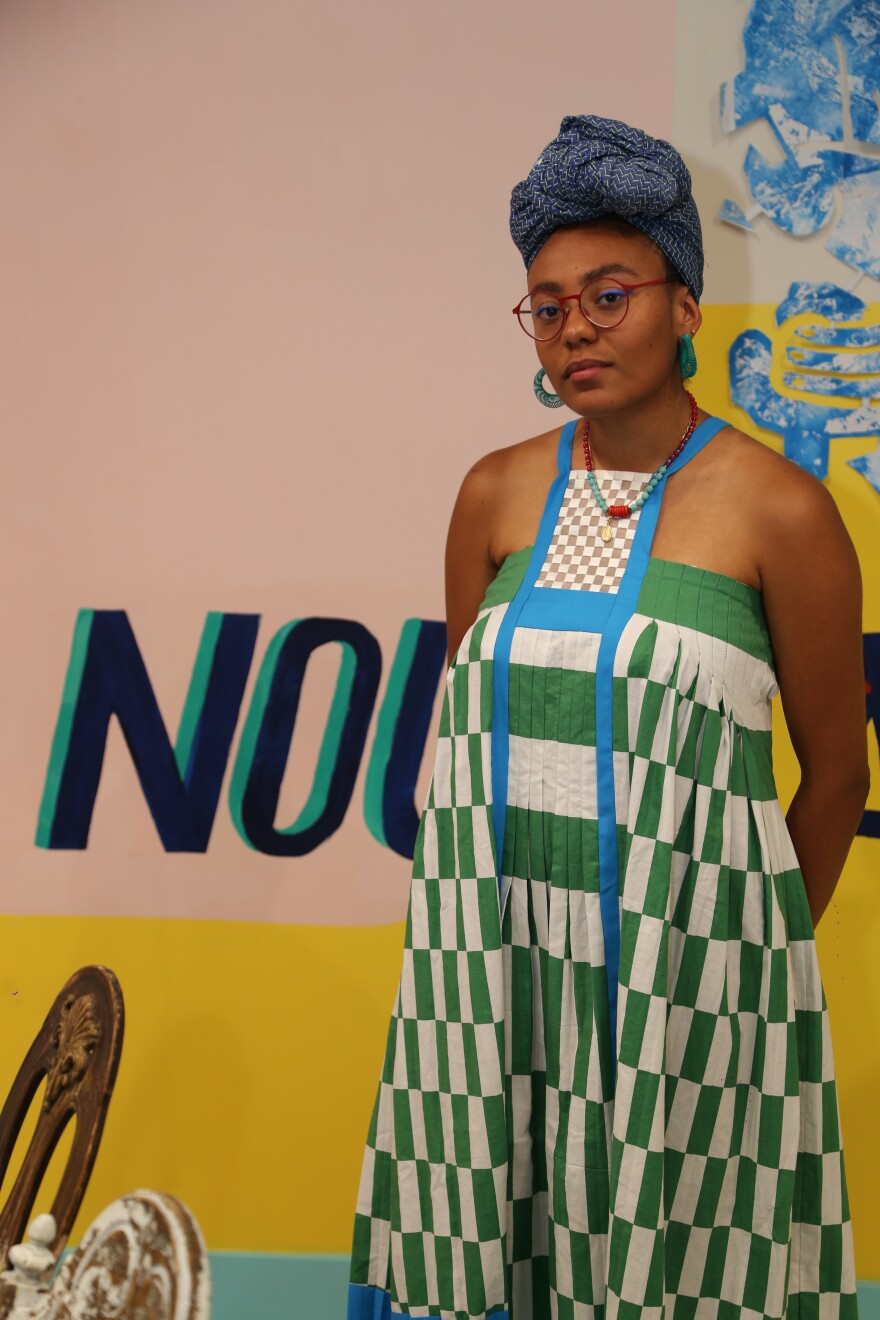The BayParc Apartments in downtown Miami opened a space to artists through a collaboration with the national nonprofit YoungArts.
The latest installation there is “A Place To Be Held” by Miami-native and 2016 YoungArts winner Nadia Wolff. She is currently studying textile art at the Rhode Island School of Design and African Studies at Brown University.
Wolff's work is the first in a series of art projects by YoungArts alumni that will be showcased at BayParc, 1756 N Bayshore Dr.
She talked to WLRN’s Nadege Green about her work and how Haitian culture inspires it.
WLRN: What inspired this installation?
WOLFF: The installation was inspired by my first trip to Haiti. I had never been before and my family is Haitian. So the trip brought up a lot of questions about belonging about identity
I essentially reinvented a black Caribbean domestic space. I was thinking about how many of the objects that black Caribbean folks curate and collect into these spaces speak to the way that we understand home or the ways we try to create intimacy for ourselves.
And at the same time how that speaks to these similar histories of trauma particularly in terms of colonialism in the Caribbean.
Did you learn anything about yourself through this process going to your parents’ homeland Haiti for the very first time? Did you discover anything new about you?
I learned a lot about my family. It's very difficult to understand what people reference and stories talking about family histories when you haven't been to the physical spaces they're talking about. So for me certain things that I understood in a very vague sense were made very physical and very concrete.
Haiti specifically is a black nation. So the way that you speak about race is less in terms of blackness in relation to other races, its blackness in relation to blackness. And then that starts to refer to class.

I visited my family's home in Port au Prince in Haiti and just a lot of the ways that my family understands class and understands blackness was made really tangible in seeing that space and being able to move through it and looking at the distinction between their bedrooms and their kitchens and then, for example, the spaces where the cooks or the maids would live within the property. There's such a distinction there that I think really informed the way that my family when they came to the US still understands class even if it isn't directly translatable in the US.
Was there anything that surprised you as you were making this installation and exploring Haitian identity and class through your artwork?
I think I have had to confront a lot of the ways that I assume Haitian-ness exists for other Haitians because I'm often referencing my own family and understanding that it is an incredibly diverse group of people even if it's a small island. There's so many different ways that we encounter our culture and cultivate it for ourselves.





